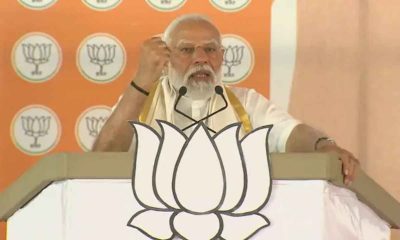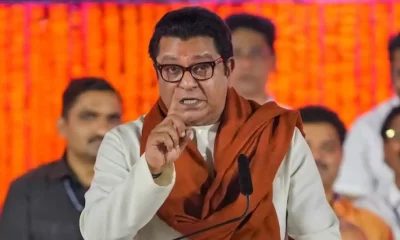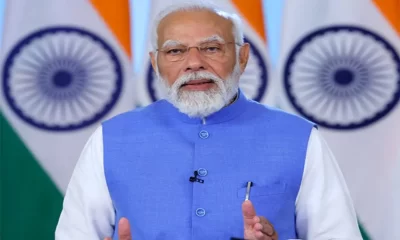Economy news
RBI governor speaks his mind finally at VGGS 2017

[vc_row][vc_column][vc_column_text]Urjit Patel did fulfil his responsibility as an independent central bank governor while talking about the state of economy at the Vibrant Gujarat Global Summit (VGGS) 2017
Parsa Venkateshwar Rao Jr[/vc_column_text][vc_column_text]There has been much concern, murmurs and even noise about the silence of Reserve Bank of India Governor Urjit Patel, who despite his impeccable academic credentials, is almost reduced to a “yes-man” of the BJP-led NDA government led by Prime Minister Narendra Modi. This is especially so in the aftermath of Mod’s dramatic demonetisation declaration on November8, last year.
Patel did speak his mind, though in a very guarded manner, after the bi-monthly Monetary Policy Committee (MPC) on December 6-7, where he spoke of short-term slowdown of the economy in the wake of demonetisation. The central bank had indicated in crystal clear language that the growth rate for 2016-17 will come down to 7.1 per cent from the estimated 7.6 per cent. But in that statement, he had expressed the view that the economy could bounce back after that.
But on Wednesday (Jan 11), he spoke his mind as an independent central bank governor which is what is expected of him. He clearly said that the legal framework for international transactions needs to be strengthened in the country if the international finance centres, a fee trade economy zone for finance, if the Gujarat International Financial Tec-City (GIFT) Centre is to succeed. It could be interpreted more as an advice to the government as to what it should be doing.
The more important aspect was with regard to the domestic economy. He has revealed his anxieties about the developments in the two largest economies, the US and China. He said: “As backdrop, there are two important transitions underway in the two largest economies. One is the realignment of fiscal, monetary and trade policies in the US, which has already imparted considerable financial volatility in the global economy in the last two months. Even NAFTA is not sacrosanct. US trade partners, especially emerging markets, stand forewarned. And all this is even before the new US administration takes office later this month. The other transition, of course, is the rebalancing of China’s growth drivers from investment and exports to domestic consumption of goods & services. One of these transitions is welcome, the other not so.” Of course, the positive transition is that unfolding in China.
Then he turned to domestic economy and did not mince his words: “For us, in India, good policy housekeeping should be the cornerstone. It is easy, and quick to fritter away gains regarding macro-economic stability. But hard and slow to regain them.”[/vc_column_text][vc_column_text]What does this mean? It means, according to RBI, management of inflation. Patel made the work of the central bank plain: “Firstly, a monetary policy framework backed by legislation. The RBI has now a notified target for inflation of 4 per cent, which a six-member Monetary Policy Committee (MPC) has been enjoined and tasked to realise.”
He argued that low and steady inflation is necessary for a meaningful interest rate structure. And he has issued a clear warning against possible recklessness in demanding lowering of interest rates in the banker’s language: “…while some government guarantees and limited subventions can help, steep interest rate subventions and large credit guarantees also impede optimal allocation of financial resources and increases moral hazard.”
Prime Minister Modi and Finance Minister Arun Jaitley are seen to be working at a populist budget, where there will be measures to stimulate credit off-take, which is possible only through arm-twisting public sector banks to lower house loans, and to offer credit incentives to farmers. The government sees this as a necessary follow-up to demonetisation, where the banks for the moment are enjoying a liquidity surge. Patel is telling the prime minister and the finance minister in very polite language that this would be a foolish thing to do.
More painful to the ears of this government is Patel’s reference to government debt, which includes the borrowings of the central government as well as the states, and how it is highest in the G-20, and how this comes in the way of “credit rating upgrade”.
Much more clear is his unambiguous advisory: “Borrowing even more and pre-empting resources from future generations by governments cannot be a short-cut to long-lasting higher growth.”
This is Patel’s wake-up call to Modi and Jaitley. They are unlikely to heed, but the RBI governor has fulfilled his responsibility.
Lead picture: RBI Governor Urjit Patel. Photo: UNI[/vc_column_text][/vc_column][/vc_row]
Economy news
Financial changes effective from September, Aadhaar update, nomination deadline for demat account
Some changes will take effect on the first day, while others will be implemented later in the month. This list will affect people’s finances.

In the month of September, there are many changes occurring, particularly in the financial sector. Some changes will take effect on the first day, while others will be implemented later in the month. This list will affect people’s finances.
The deadline to update an individual’s Aadhaar card details for free is quickly approaching. The Unique Identification Authority of India (UIDAI) extended the deadline from June 14 to September 14, 2023. This scheme is specifically for citizens who obtained their Aadhaar card 10 years ago and have yet to update their information. People can take this opportunity to update their details before it’s too late.
The nomination process for trading and demat accounts is mandatory for holders and the deadline for this has been extended by the Security and Exchange Board of India (SEBI). The account holders have to make nominations or opt out of it before September 30.
People will need to update and link of Aadhaar identity documents with PAN cards. Those who have credit cards from Axis Bank will also experience the effects of these changes starting this month.
As per the updated terms and conditions, Axis Bank’s Magnus credit card users need to pay higher fees. The annual fee has been increased to Rs 12,500. Also, the benefits associated with the card will be updated.
This month marks the final opportunity for individuals to exchange Rs 2,000 notes. As stated by the Reserve Bank of India (RBI) in May, individuals may exchange or deposit these notes into their bank accounts before the specified deadline.
The central bank has specified that individuals may exchange or deposit for lower denomination notes, up to Rs 20,000 at a time, until September 30th. Interestingly, even after the deadline, Rs 2,000 notes will still be considered valid tender.
Starting from the current financial year, the Ministry of Finance has made it mandatory to provide both Permanent Account Number (PAN) and Aadhaar card information when making investments in small saving schemes such as the Public Provident Fund (PPF), Post Office Saving Scheme, and Senior Citizens Saving Scheme (SCSS). Existing subscribers must submit their Aadhaar number before September 30th, or their accounts will be frozen.
Economy news
India will remain on similar growth curve till 2030, expect well behaved inflation this fiscal: CEA
Chief Economic Adviser (CEA) V Anantha Nageswaran on Tuesday projected that India’s economy was poised to do better and expected to grow at 6.5-7 percent till the end of the decade.
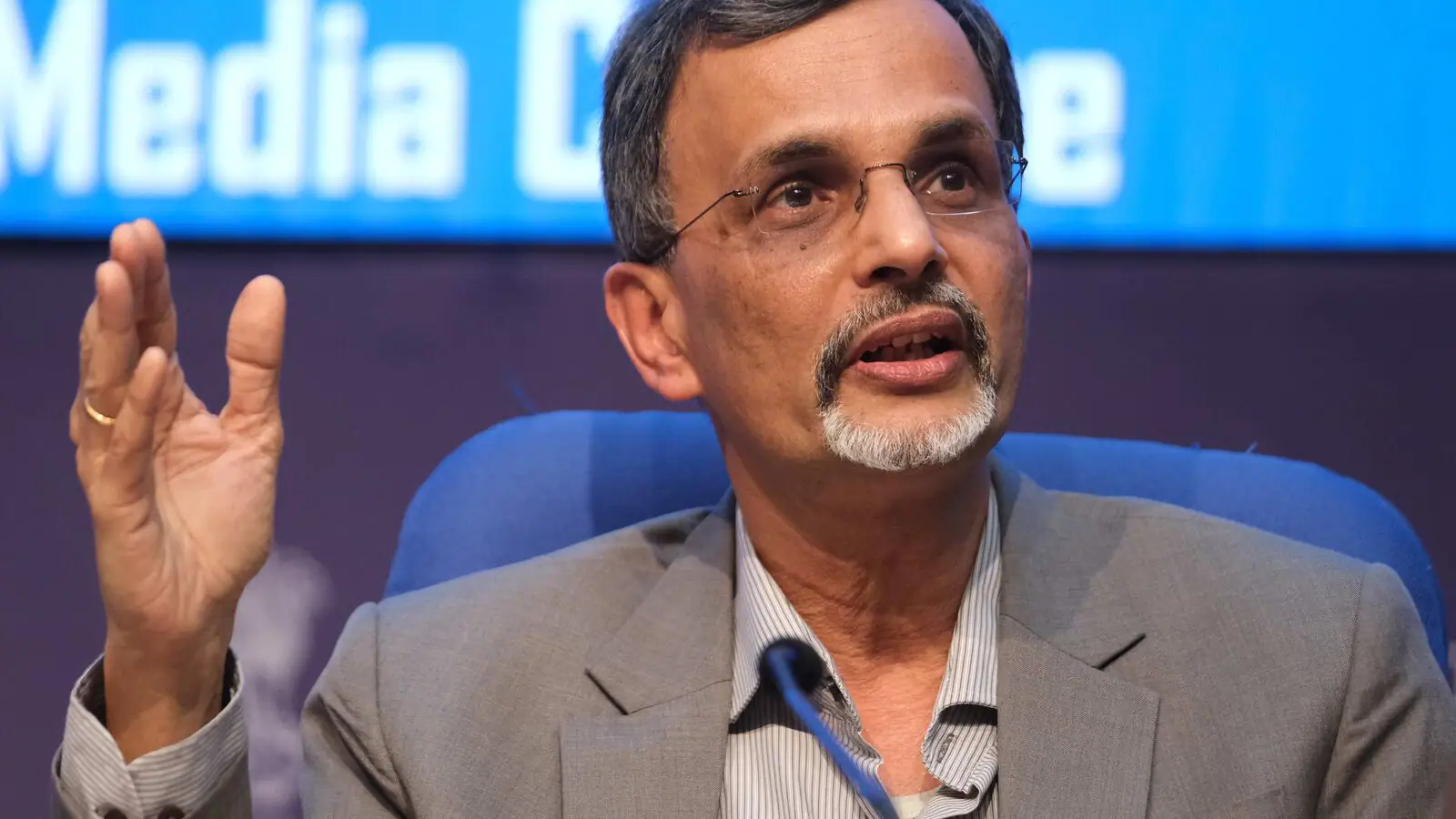
Chief Economic Adviser (CEA) V Anantha Nageswaran on Tuesday projected that India’s economy was poised to do better and expected to grow at 6.5-7 percent till the end of the decade.
Nageswaran, while talking to the media after tabling of the Economic Survey in Parliament by Finance Minister Nirmala Sitharaman, said that the inflation is likely to be “well behaved” in the coming fiscal year barring any unforeseen factors.
According to the Economic Survey prepared by the CEA, RBI projection of retail inflation at 6.8 per cent in the current fiscal is neither too high to deter private consumption, nor too low as to weaken inducement to invest.
The Economic Survey for the current fiscal also state that the Indian economy is expected to hit a minor slow down to 6.5 percent in April 2023 but will continue to remain the fastest-growing major economy in the world owing to its ability to better deal with challenges faced by the global economy.
The CEA maintained that the projected growth rate would remain stable as long as oil prices stayed below 100 dollars per barrel. He also pointed out that the quality of public expenditure has gone up and the government has become more transparent with budget deficit numbers, adding that an increased transparency is being witnessed in public procurement.
Read Also: Finance Minister Nirmala Sitharaman tables Economic Survey 2023, check highlights here
Nageswaran stressed that credit growth is picking up across sectors, and credit to MSMEs has grown at 30 per cent since January 2022, while NPAs in NBFCs is lower than what it was 15 months ago.
The CEA revealed that India is well ahead of its targets for renewable energy mix.
Earlier on Tuesday, the International Monetary Fund in its January update of the World Economic Outlook called India as a bright spot in an otherwise gloomy world economy which, together with China, will account for half of the global growth in 2023, compared to the US and Euro area, who account for just a 10th of the world’s growth.
The IMF report had made almost similar projections to the Economic Survey tabled by the government. It has projected India’s growth to dip slightly from 6.1 percent to 6.8 percent during the current fiscal year ending on March 31. IMF also expects some minor slowdown in the Indian economy in the next fiscal year.
Air India Pee Gate: Delhi court grants bail to accused Shankar Mishra
Visakhapatnam to be the new capital of Andhra Pradesh, says CM Y S Jagan Mohan Reddy
Economy news
India a bright spot amid projected decline in global growth: IMF
The International Monetary Fund (IMF) has projected India’s growth to dip slightly from 6.1 percent to 6.8 percent during the current fiscal year ending on March 31. IMF also expects some minor slowdown in the Indian economy in the next fiscal year.
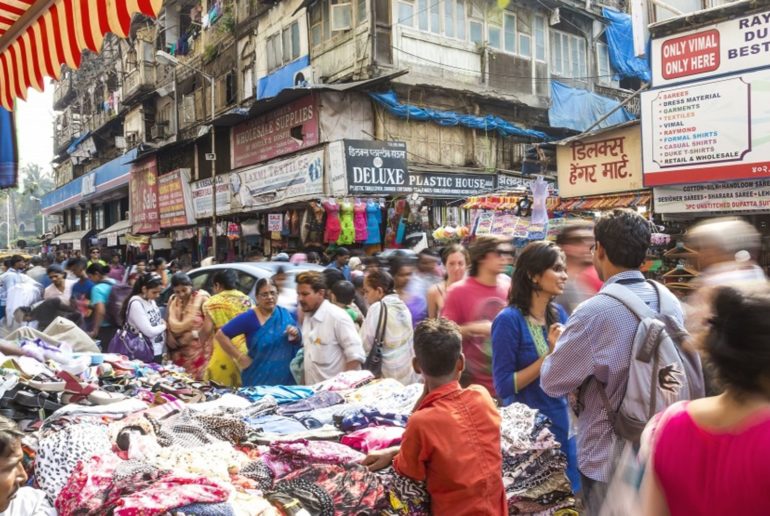
The International Monetary Fund (IMF) has projected India’s growth to dip slightly from 6.1 percent to 6.8 percent during the current fiscal year ending on March 31. IMF also expects some minor slowdown in the Indian economy in the next fiscal year.
According to the January update of the World Economic Outlook released by global fiscal body on Tuesday, global growth is projected to fall from a projected 3.4 percent in 2022 to 2.9 percent in 2023, then rise to 3.1 percent in 2024.
Pierre-Olivier Gourinchas, Chief Economist and Director, Research Department of the IMF said in a statement that the IMF’s projections for India remain unchanged from its October update as they predict a 6.8 percent growth curve for the Indian economy for the current fiscal and an expected minor dip to 6.1 percent in the next fiscal.
According to the IMF World Economic Outlook, the slowdown is largely driven by external factors, adding that the India’s growth will once again see an upward curve and go up to 6.8 percent in 2024 due to resilient domestic demand despite external factors.
The report expects a rise in growth in developing Asian nations in 2023 and 2024 to 5.3 percent and 5.2 percent, respectively, after the slowdown in 2022 to 4.3 percent.
For the first time in the last four decades, China’s growth fell below the global average in the fourth quarter of 2022 which saw a 0.2 percentage point downgrade, settling at 3.0 percent. However, China’s growth is expected to rise to 5.2 percent in 2023 and fall to 4.5 percent in 2024 before settling at below 4 percent over the medium term amid declining business dynamism and slow progress on structural reforms.
Read Also: Railways cancel over 350 trains, divert route of 16 trains, check full list here
Gourinchas pointed out that emerging market economies and developing economies are already on the way up and have seen a slight rise in growth for the region from 3.9 percent in 2022 to 4 percent in 2023.
He stressed that India and China combined account for almost 50 percent of world growth in 2023, adding that IMF’s positive view on India’s growth curve remains unchanged.
Gourinchas in a blog post termed India as a bright spot which, together with China, will account for half of the global growth in 2023, compared to the US and Euro area, who account for just a 10th of the world’s growth.
Gourinchas also forecasted a much more pronounced slowdown for advanced economies with a decline from 2.7 percent last year to 1.2 percent and 1.4 percent this year and next.
Nine out of 10 advanced economies will likely decelerate, he added.
He predicted that the US’ growth will slow to 1.4 percent in 2023 as Federal Reserve interest-rate hikes work their way through the economy. Euro area conditions are more challenging despite signs of resilience to the energy crisis, a mild winter, and generous fiscal support, he said.
Haryana man killed in road mishap, police say; family claims beaten to death by cow vigilantes
Peshawar suicide bombing: Death toll rises to 83, over 150 wounded
-

 Cricket news19 hours ago
Cricket news19 hours agoIPL 2024: Yashasvi Jaiswal hits brilliant century to help Rajasthan Royals beat Mumbai Indians by 9 wickets
-

 2024 Lok Sabha Elections17 hours ago
2024 Lok Sabha Elections17 hours agoNCP (SP) leader Sharad Pawar says Prime Minister Narendra Modi is trying to create fear like Russian President Vladimir Putin
-

 Entertainment17 hours ago
Entertainment17 hours agoMithun Chakraborty, Usha Uthup honoured with Padma Bhushan
-

 Entertainment15 hours ago
Entertainment15 hours agoFan jumps on stage and hugs Atif Aslam during concert, video goes viral
-

 2024 Lok Sabha Elections17 hours ago
2024 Lok Sabha Elections17 hours agoPrime Minister Narendra Modi says listening to Hanuman Chalisa under Congress rule is a crime
-

 Entertainment13 hours ago
Entertainment13 hours agoManisha Koirala reveals reason for rejecting Dil To Pagal Hai, says regrets that decision
-
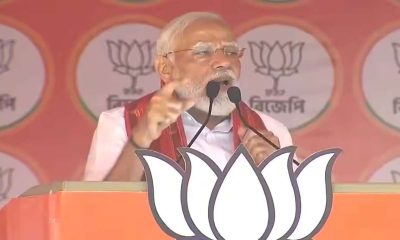
 2024 Lok Sabha Elections11 hours ago
2024 Lok Sabha Elections11 hours agoPM Modi says Congress leaders consider themselves above Lord Ram
-

 India News19 hours ago
India News19 hours agoArvind Kejriwal given insulin in Tihar jail after sugar levels touch 320



